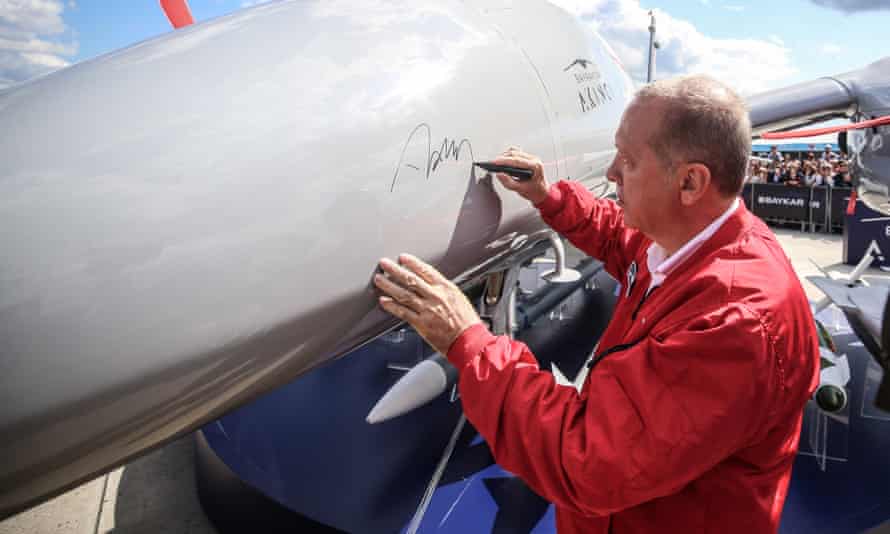
By Liu Chang
Turkey has recently launched Operation Spring Shield military operation against Syrian government forces. According to media reports, Turkey used over 10 drones in the latest operation. These drones were not only fighting on the front of Idlib, but also penetrating military airports near Aleppo and Hama controlled by Damascus. There are even social media videos showing that the Turkish drone has destroyed the Pantsir-S1 (NATO designation SA-22 Greyhound) antiaircraft surface-to-air missile systems of the Syrian army. Turkey’s operation attracted the attention of international military observers, and its technological development level of drones will also be reviewed.
Drones have the advantages of small size, light weight, low cost, good stealthiness, good maneuverability, and long flight time. The advanced development of the commercial market makes it easy to buy drones. On the Syrian battlefield today, drones could be seen everywhere, used by all the US, Russian, Israeli, Turkish, and Iranian forces in direct conflicts.
On March 1, the Syrian military issued a warning that any air target would be considered a hostile target and shot down as Syria shut down Idlib's airspace on March 1. This warning indicates that destroying upon discovering has become the norm on the battlefield, which is also a point worthy of attention in future drone wars. On the Syrian battlefield, not only sovereign states have this capability, but extremist organizations are also wielding a stick of "destroying upon discovering", which has brought deep technical difficulties and ethical crisis to the drone war.
From a technical perspective, anti-drone operations are becoming a required course for global military powers. Traditional air defense systems can still be used to destroy large and medium-sized drones. However, this method is tantamount to use a sledgehammer to crack a nut when it comes to small drones. Research suggests that electronic interference and electronic trapping will become an important direction for future anti-drone operations. The basic principle is to use radio to interfere with the drone's navigation, communication, and data links to prevent it from flying properly, and even deceive enemy drone operators, and wait to seize the drone and reverse intrusion.
Though technical difficulties can be solved, it is difficult to break through the ethical crisis. The core of drone technology is "unmanned", but the essence of war is the "human" struggle. Artificial intelligence, or unmanned war, is nothing more than creating the illusion that humans are outsiders of war, and let machines determine human life and death.
Opponents believe that the machine cannot screen distinguish armed people and civilians, let alone the power to determine life and death. Take "targeted elimination" as an example, such a strike method often causes collateral damages. According to data by the Bureau of Investigative Journalism (TBIJ), US drones launched 405 attacks in Pakistan, killing 959 people including 204 children from 2004 to 2014. In these strikes, the US government has defaulted all dead and injured adult men as militants. The collateral damages caused by this indiscrimination has have heightened the questioning of drones.
Besides, the use of drones to bomb Syrian government forces by Turkey has also caused observers to worry about the morality of war. Some experts believe that extreme imbalances in technology will lead to unbalanced wars. The Turkish army uses drones to attack human beings in the Syrian government forces, and this asymmetrical strike of machines vs. humans not only loses the morality of war, but also allows the benefiting side to abuse the technical means of war in a super-low-risk manner. Force is becoming cheaper, and human beings are losing their awe of life.
Disclaimer: This article is originally published on whb.cn and translated from Chinese into English and edited by the China Military Online. The information, ideas or opinions appearing in this article do not necessarily reflect the views of eng.chinamil.com.cn.













